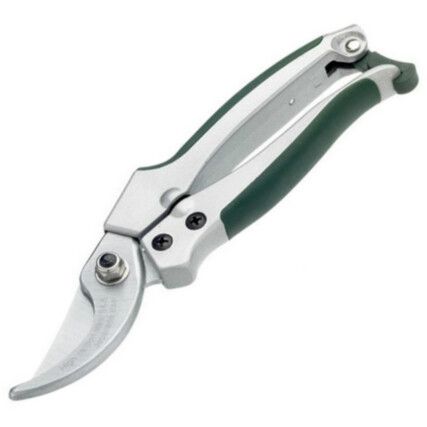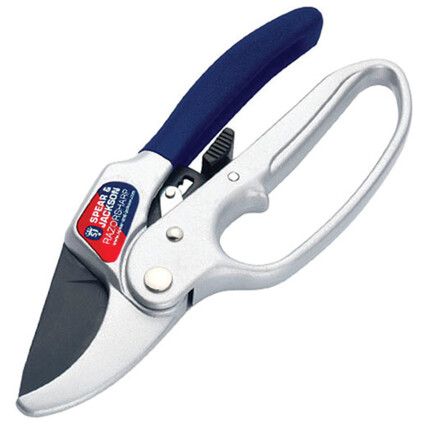Secateurs
Reinvigorate your garden and keep plants healthy with secateurs from Cromwell. Available in bypass, anvil and ratchet types, we stock a range of high-quality garden secateurs to suit all your pruning tasks.
We carefully select our products from market-leading brands; so we can deliver a high-performance and varied range of secateurs to you from brands like Spear & Jackson® and Bulldog®.
What are secateurs?
Gardening secateurs, also called pruners, are designed to prune and trim back dead or diseased growth on plants and trees. Like a pair of scissors for the garden, they're strong and extremely sharp to cut cleanly through sappy growth to encourage heavier flowering and fruiting.
Why secateurs?
Plants often need to be cut back and controlled, if not just for aesthetic purposes, then for production purposes too.
When are secateurs used?
Pruning is an important task to keep a plant flowering or fruiting. Cutting back different plants at certain times of the year will reinvigorate growth for the following season and keep your plant healthy.
Secateur types
Secateurs are available in three types to suit personal preference and the type of pruning required. They're often supplied with replacement components like an extra cutting blade or spring to provide longevity and healthy cuts to plants.
• Anvil secateurs - These feature a sharp blade at the top that cuts down onto an anvil base. They must be kept sharp or they may start to crush stems, which will allow the ingress of bacteria into the wound
• Bypass secateurs - These cut using a scissor action with one blade bypassing the other to deliver a clean and easy cut
• Ratchet secateurs - These complete a cut over a series of closures and are ideal for thicker branches that anvil and bypass secateurs fail to cut through. They're ideal for weaker wrists or those with minimal gripping strength
Considerations when choosing secateurs
• Branch thickness - personal preference dictates which type of garden secateurs you'll buy to a point. When you start to move onto thicker branches, ratchet secateurs are a great tool to achieve a clean cut while protecting your hands and wrists from strain.
• Grip - while some secateurs will feature plastic enclosed handles, others have added grip material, like cork to keep them comfortable for the user.
• Handle - some secateurs have added features like a twisting handle, which takes most of the effort out of the cut.
Secateurs jargon buster
Here at Cromwell we want to make it easier for you to shop our range of secateurs and to ensure you can make a confident purchasing decision. We've outlined some key terms below to aid you in your decision.
Are hand pruners and pruning shears the same as secateurs?
Generally the term 'secateurs' is primarily used in the UK, whilst the US term for this tool is hand pruners or pruning shears. All terms refer to the same tool.
FAQs
What's the difference between shears and secateurs?
The difference between these two garden tools is size and application. Secateurs are designed for hand pruning smaller branches, while shears are large with straight blades that cut in a scissor-like motion and are used for trimming hedges and topiary.
Can I use loppers instead of secateurs?
Loppers are a much larger version of secateurs with blade designs that work in the same way as those we have discussed above. They typically have long, extending handles to allow for pruning in tree canopies, with larger and sharper blades than secateurs.
When in a bind, they can, in theory be used instead of secateurs, however, they'd be difficult to control in a localised area and may cut through more growth than you intend. We recommend using the right tool for the right job and keeping to secateurs for pruning small branches and sappy growth.

